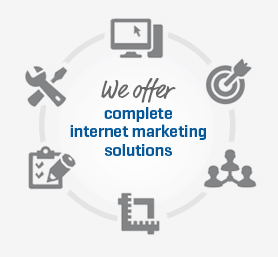Creating Effective Web Contact Forms
For small businesses, a website generally has one main purpose – to generate leads. Assuming you’re not operating an e-commerce site, you’re looking for people to find you online and either call you, or email you. This post deals with practical how-to’s on getting more leads through your website with properly structured contact forms.
USE A CONTACT FORM
As opposed to simply having a mailto link on your site, use a contact form. Put simply, if you have an actual contact form for the user to fill out instead of just a mailto link, you’ll get more leads!
ABOVE THE SCROLL
Whenever the user has to scroll down on their screen to find your contact form, you’ve automatically cut down on the number of leads your site will generate. Studies have shown that 2/3of clicks take place above the scroll! So that’s where your contact form should be located.
ASK FOR THE MINIMUM AMOUNT OF INFO
You need to ask yourself, “What is the minimum amount of information I need from someone in order to move to the next step in the process?” Whatever the answer to that question is – those are the fields that you should include in your contact form. Every additional field in your form, the longer it takes the user to complete the form, the larger/longer the form appears to be to the user – the fewer leads you’ll receive. Say you’re a general contractor for example, a lead generation form on your website is designed to simply get someone’s contact info. Too often, I see forms that ask for the user’s address, postal code and their budget. At this stage, that information is not important. You don’t need that information because the next step in the process is to follow up with them by phone or by email – you’re not going to their house right away after receiving the lead.
CALL-TO-ACTION
Depending on your business, it can make a lot of sense to include some type of call-to-action button placed prominently on your homepage, or sometimes on every page of your website which directs the user to a separate page with your contact form. Buttons that includes calls-to-action such as ‘Get a Free Estimate’, ‘Book Free In-Home Consultation’, or ‘Schedule an Appointment’, can be effective in drawing the user’s eye to your contact form, and getting more leads.
QUICK CONTACT FORM
Instead of having a call-to-action button that appears on the homepage or site-wide, you can also include what we call a ‘quick contact form’. Generally the placement of this type of form is similar to where you would have a call-to-action button, but instead, you simply have a form that includes just fields for Name, Phone & Email. We’ve found this to be particularly effective in industries such as moving, carpet cleaning, HVAC – basically any type of industry where it’s customary to get multiple quotes/estimates, and where there’s a perception amongst consumers that there is little differentiation in the end product or service that you are purchasing.
TRACKING YOUR LEADS
You want to know where your leads are coming from so you know where your money, time and resources are best allocated. There are a couple ways of gathering this type of information, but generally the simplest way of going about is to have the user redirected to a ‘thank you’ page after they hit ‘Submit’ on your form. You can then use Goal Tracking within Google Analytics to see where your leads are coming (google organic, google paid, referral sites like Yellow Pages, Goldbook, Chamber of Commerce, etc…). If you’re advertising with Google AdWords, you’ll also want to add Conversion Tracking Code to this ‘thank you’ page.





